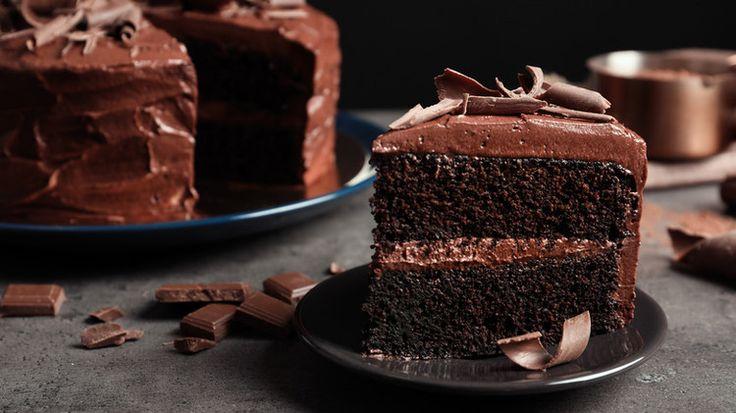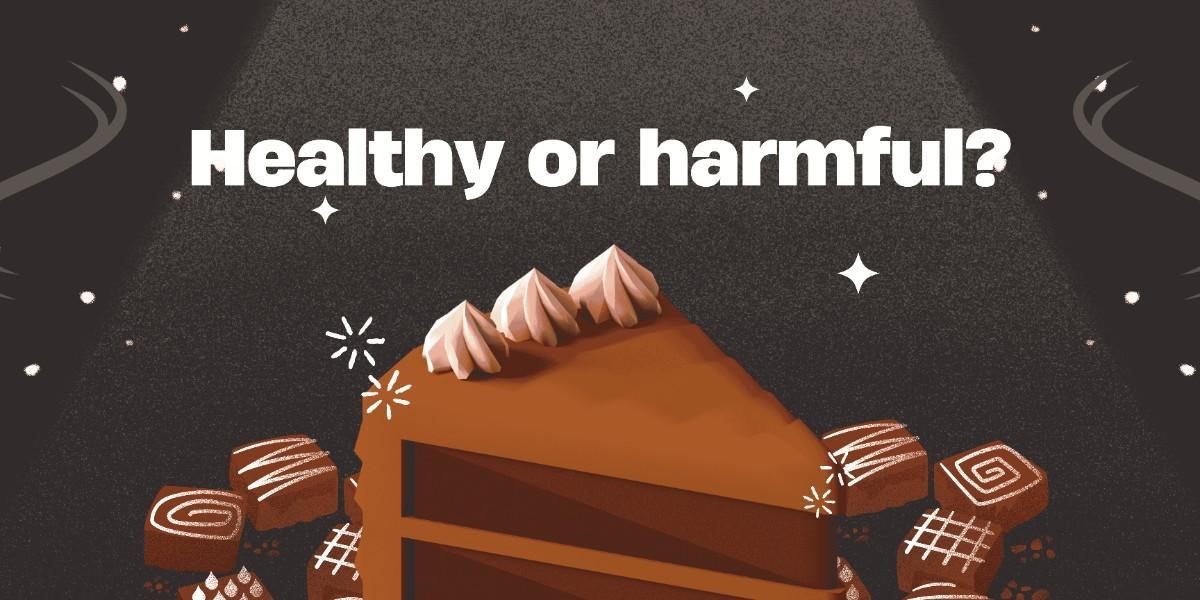
-
· 0 Comentários ·0 Compartilhamentos ·2K Visualizações ·0 Anterior2

-
Historical cake-
The cake of today has a long history that speaks of traders, travellers and invaders.
The boundary between cake and bread is blurred: the precursor of cake is probably a hard bread made from oats, barley, salt and water.
The Romans added eggs and honey to the mix, beating the eggs to add air – a recipe that is not dissimilar to an old-fashioned sponge cake (three eggs and three ounces each of plain flour and sugar, with a pinch of salt).
The ancient Egyptians are credited for discovering the properties of yeast – the raising agent used until baking powder was invented in the mid-nineteenth century.
The word cake appeared in the English language in the Middle Ages – when they were made of dried fruit, nuts, ginger and suet – and is thought to have derived from the Old Norse word “kaka”.
By the seventeenth century, the influence of historical traders and invaders is evident in English recipes. Recipes call for mace, nutmeg and cloves from Indonesia, cinnamon from Sri Lanka, saffron and coriander from Greece, ginger from southern China, caraway from central Europe, almonds from Asia, and rosemary from the Mediterranean. These historical recipes are still used to make Christmas fruit cakes and puddings, and hot cross buns.Historical cake- The cake of today has a long history that speaks of traders, travellers and invaders. The boundary between cake and bread is blurred: the precursor of cake is probably a hard bread made from oats, barley, salt and water. The Romans added eggs and honey to the mix, beating the eggs to add air – a recipe that is not dissimilar to an old-fashioned sponge cake (three eggs and three ounces each of plain flour and sugar, with a pinch of salt). The ancient Egyptians are credited for discovering the properties of yeast – the raising agent used until baking powder was invented in the mid-nineteenth century. The word cake appeared in the English language in the Middle Ages – when they were made of dried fruit, nuts, ginger and suet – and is thought to have derived from the Old Norse word “kaka”. By the seventeenth century, the influence of historical traders and invaders is evident in English recipes. Recipes call for mace, nutmeg and cloves from Indonesia, cinnamon from Sri Lanka, saffron and coriander from Greece, ginger from southern China, caraway from central Europe, almonds from Asia, and rosemary from the Mediterranean. These historical recipes are still used to make Christmas fruit cakes and puddings, and hot cross buns.· 0 Comentários ·0 Compartilhamentos ·772 Visualizações ·0 Anterior1
-
Connecting over cake -
Cake has traditionally been a food of celebration, friendship, sharing, joy and grieving. Cake is served at birthdays, weddings, funerals, with friends or simply as a conduit to bring the “team” together in the workplace.
Cake signifies place and connection. A semolina cake with almonds, fruit syrups and yoghurt can be found in Egypt, Greece and Turkey, with regional variations. Here in Australia, we recognise lamingtons as our own and, rightly or wrongly, claim the pavlova as true blue.
In his 1982 book, Middle Eastern Cookery, Arto Der Haroutunian offers us recipes for doughnuts and sesame biscuits with Muslim, Jewish and Christian traditions. Der Haroutunian famously said, “I would like to think that St Paul, Muhammad and the infamous Genghis Khan all ate these sesame-coated biscuits with their milk or tea”. Today’s versions are still popular in Turkey, Greece, Egypt, Syria, Lebanon and Iran.Connecting over cake - Cake has traditionally been a food of celebration, friendship, sharing, joy and grieving. Cake is served at birthdays, weddings, funerals, with friends or simply as a conduit to bring the “team” together in the workplace. Cake signifies place and connection. A semolina cake with almonds, fruit syrups and yoghurt can be found in Egypt, Greece and Turkey, with regional variations. Here in Australia, we recognise lamingtons as our own and, rightly or wrongly, claim the pavlova as true blue. In his 1982 book, Middle Eastern Cookery, Arto Der Haroutunian offers us recipes for doughnuts and sesame biscuits with Muslim, Jewish and Christian traditions. Der Haroutunian famously said, “I would like to think that St Paul, Muhammad and the infamous Genghis Khan all ate these sesame-coated biscuits with their milk or tea”. Today’s versions are still popular in Turkey, Greece, Egypt, Syria, Lebanon and Iran.0 Comentários ·0 Compartilhamentos ·873 Visualizações ·0 Anterior -
Healthy or harmful?
Let’s be clear: cakes are not universally unhealthy. Consider this scenario.
Susannah had a big night of cooking in front of her – her twins, Angus and Lilly, turned 10 the next day and she had promised them trays of cupcakes to share with each of their classes at school. First she makes a few phone calls to parents: the twins have friends who are allergic to dairy, to eggs, there is a coeliac allergic to gluten, and a diabetic.
Susannah decides to make flourless orange and almond cupcakes (no gluten), individual apple and raison crumble cupcakes (no eggs and minimal sugar), rose and vanilla cupcakes, zucchini and walnut cupcakes (Angus’s favourite), and chocolate butterfly cupcakes (Lilly’s favourite). Ninety cupcakes in all.
She creams organic butter and raw sugar; adds rich orange-yolked eggs from the chooks; the zucchini is picked from the veggie patch; apples and oranges from the orchard; bright pink rose petals from the garden; spelt flour and almond meal is sourced from the organic range at the supermarket; fair-trade cocoa and chocolate are purchased at the health food shop. Instructions for the teachers are written to make sure allergies are catered for, and the cake boxes are despatched to school.
On the birthday afternoon, both the year four classes come together to share the cupcakes and sing happy birthday to Angus and Lilly. Teachers and students alike savour the fragrant cupcakes covered in drizzles of icing, decorated with rose petals and crystallised fruit. All except the new girl, Madeleine. She picks up a cupcake and sniffs cautiously. After nibbling an edge off the icing, she wraps the cupcake in paper and hides it in her bag.
The next day, Mrs Morrison, the principal, is sitting in her office wondering if she can wait til morning tea before she eats her cupcake, when Madeleine’s mother storms into her office.
“How dare you allow my child to eat junk food?” she asks. “Madeleine needs to stay slim and healthy. This is outrageous!”
Can these beautiful cupcakes be labelled “junk”? Fresh butter and eggs, zucchini, walnuts, apples and dried fruit and a celebration, an occasion for joy and friendship: nutritious, surely, and so socially valuable.
There is too much history and tradition bound up in cakes to eliminate them from our diet. Eat cake, not as a substitute for real food, but as a normal part of life and living. And perhaps as a bridge over conflict, discrimination and ignorance.Healthy or harmful? Let’s be clear: cakes are not universally unhealthy. Consider this scenario. Susannah had a big night of cooking in front of her – her twins, Angus and Lilly, turned 10 the next day and she had promised them trays of cupcakes to share with each of their classes at school. First she makes a few phone calls to parents: the twins have friends who are allergic to dairy, to eggs, there is a coeliac allergic to gluten, and a diabetic. Susannah decides to make flourless orange and almond cupcakes (no gluten), individual apple and raison crumble cupcakes (no eggs and minimal sugar), rose and vanilla cupcakes, zucchini and walnut cupcakes (Angus’s favourite), and chocolate butterfly cupcakes (Lilly’s favourite). Ninety cupcakes in all. She creams organic butter and raw sugar; adds rich orange-yolked eggs from the chooks; the zucchini is picked from the veggie patch; apples and oranges from the orchard; bright pink rose petals from the garden; spelt flour and almond meal is sourced from the organic range at the supermarket; fair-trade cocoa and chocolate are purchased at the health food shop. Instructions for the teachers are written to make sure allergies are catered for, and the cake boxes are despatched to school. On the birthday afternoon, both the year four classes come together to share the cupcakes and sing happy birthday to Angus and Lilly. Teachers and students alike savour the fragrant cupcakes covered in drizzles of icing, decorated with rose petals and crystallised fruit. All except the new girl, Madeleine. She picks up a cupcake and sniffs cautiously. After nibbling an edge off the icing, she wraps the cupcake in paper and hides it in her bag. The next day, Mrs Morrison, the principal, is sitting in her office wondering if she can wait til morning tea before she eats her cupcake, when Madeleine’s mother storms into her office. “How dare you allow my child to eat junk food?” she asks. “Madeleine needs to stay slim and healthy. This is outrageous!” Can these beautiful cupcakes be labelled “junk”? Fresh butter and eggs, zucchini, walnuts, apples and dried fruit and a celebration, an occasion for joy and friendship: nutritious, surely, and so socially valuable. There is too much history and tradition bound up in cakes to eliminate them from our diet. Eat cake, not as a substitute for real food, but as a normal part of life and living. And perhaps as a bridge over conflict, discrimination and ignorance.· 0 Comentários ·0 Compartilhamentos ·749 Visualizações ·0 Anterior2
-
-
· 0 Comentários ·0 Compartilhamentos ·2K Visualizações ·0 Anterior1

-
· 0 Comentários ·0 Compartilhamentos ·1K Visualizações ·0 Anterior
 2
2
-
https://trendza.in/0 Comentários ·0 Compartilhamentos ·615 Visualizações ·0 Anterior
-
https://trendza.in/blog/posts/pyrite-stone-benefits-unlock-wealth-power-now0 Comentários ·0 Compartilhamentos ·749 Visualizações ·0 Anterior
-
https://trendza.in/blog/posts/red-jasper-crystal-ultimate-guide-to-healing-luxury0 Comentários ·0 Compartilhamentos ·774 Visualizações ·0 Anterior






